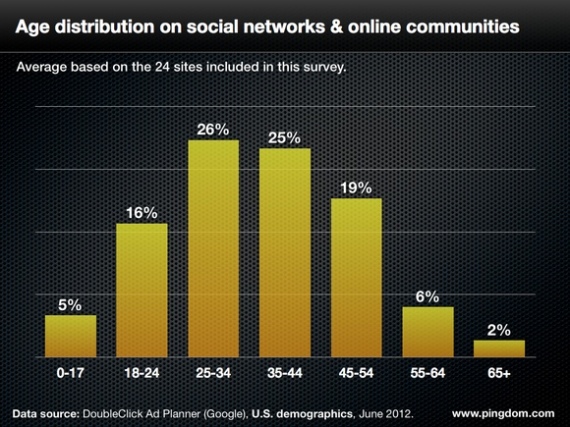 In my previous blog post, I discussed the effects of emerging social technologies, and what it means for leaders to execute CEO challenges — top-down initiatives that solve a high-level business problem — through managed innovation, collaboration, and employee engagement.
In my previous blog post, I discussed the effects of emerging social technologies, and what it means for leaders to execute CEO challenges — top-down initiatives that solve a high-level business problem — through managed innovation, collaboration, and employee engagement.
These types of collaborative challenges come in many forms; a necessary approach considering the multitude of variables that exist from company to company. And, as expected, each brand of challenge comes with its own unique hurdles, benefits, needs, and potential outcomes.
The Grand CEO Challenge
When working within the confines of an innovation management program, it’s important that the type of challenge be selected based on what issue an organization is trying to solve. A popular type is the CEO Grand Challenge, where the purpose is to rally the company around a significant stake in the ground or a specific barrier to overcome that will prove meaningful to the company. The CEO sets a barrier, with a race ensuing to be the first employee to overcome it. You’ve probably seen or heard of similar Challenge mechanics in popular mechanisms like the Ansari X-Prize, which stimulated the race for commercial space flight.
 One such challenge, and famous one, revolves around Apple’s Steve Jobs. Walking into the developer’s office space one day, he simply laid a manila envelope on top of their desk and said: “Make me a computer that fits in that.” The result? The Macbook Air. Steve later delighted in using the manila envelope example when presenting the resulting product to the press at the launch event.
One such challenge, and famous one, revolves around Apple’s Steve Jobs. Walking into the developer’s office space one day, he simply laid a manila envelope on top of their desk and said: “Make me a computer that fits in that.” The result? The Macbook Air. Steve later delighted in using the manila envelope example when presenting the resulting product to the press at the launch event.
The CEO Innovation Prize
The CEO Innovation Prize approach is increasingly becoming the most popular and successful challenge type. As CEOs leverage advanced gamification techniques to engage their crowd on multiple levels, they provide participants with more than just a goal — they also create a journey to get to that goal. It’s especially popular because a well-designed Innovation Prize can rally the company around the concept of innovation, and drive employees to embrace it on a cultural and emotional level.
 One well-known example of this is the award winning Citi Ideas Challenge, which we at Mindjet developed in partnership with Citi’s Innovation team. Over the course of four months, Citi’s then CEO, Vikram Pandit, launched a challenge to all 266,000 Citi employees across 94 countries around the world, asking them to re-envision the future of banking.
One well-known example of this is the award winning Citi Ideas Challenge, which we at Mindjet developed in partnership with Citi’s Innovation team. Over the course of four months, Citi’s then CEO, Vikram Pandit, launched a challenge to all 266,000 Citi employees across 94 countries around the world, asking them to re-envision the future of banking.
The Challenge effectively engaged employees, who quickly began submitting and developing leading-edge concepts for what that future could look like. They did so in teams that spanned multiple business units and geographical locations. At the end of the Challenge, four finalist teams were asked to pitch live to five of Citi’s top executives, as well as the company as a whole, in order to decide which idea would be the winner.
The result of the challenge not only identified some great concepts for incubation, but also heralded the entrance of a new, collaborative work style at Citi.
A Call to Arms
The CEO Call to Arms is a fairly normal type of challenge. It’s a call from the top to solve a significant strategic problem. These come in many shapes and sizes, but always revolve around addressing a particular business problem that is close to the CEO’s heart.
 Andrew Clark, CEO of Bridgepoint Education, ran one such challenge to solve one of his biggest issues: maximizing customer and student retention. As a major educational institution, the challenge of not just attracting new students — but then also retaining them all the way through to graduation — is absolutely key to their survival. Leading the way, Andrew launched his CEO Challenge to all 7,600 employees, back office and academic staff alike. This resulted in 465 ideas from all parts of the organization, aimed at targeting this key problem — many of which have been implemented to great effect since.
Andrew Clark, CEO of Bridgepoint Education, ran one such challenge to solve one of his biggest issues: maximizing customer and student retention. As a major educational institution, the challenge of not just attracting new students — but then also retaining them all the way through to graduation — is absolutely key to their survival. Leading the way, Andrew launched his CEO Challenge to all 7,600 employees, back office and academic staff alike. This resulted in 465 ideas from all parts of the organization, aimed at targeting this key problem — many of which have been implemented to great effect since.
In addition, the Challenge established new collaborative benchmarks for Bridgepoint that broke down organizational silos, setting the scene for further collaborative events at Bridgepoint.
Having reviewed 3 different CEO Challenge types, let’s look at some of the Issues to consider when running a successful CEO Challenge.
Issues to Consider: Sponsorship, Scalability, and Globality
There are many elements that differentiate even the simplest of CEO challenges from your standard, run-of-the-mill collaborative challenge. For example, there are:
– Issues of Sponsorship. As many of you experienced Innovators know, sponsorship is a key element to any innovation challenge. However, when your sponsorship comes from the very top of an organization, it brings some unique hurdles with it. As with any other messages coming from the CEO, the employee base takes messages from the very top as guidance for how they should be behaving and approaching business problems. As such, extra care needs to be taken around getting the goals, execution, and communications that go into a CEO challenge just right, because the risks associated with getting them wrong can reverberate exponentially across the organization.
– Issues of Scale. With large numbers come some unique problems to overcome, including communication challenges to rally the participant base. It’s important to ask the following:
- Do we need to prepare line managers with enough information to answer their charges?
- Do we need to engage in silo busting activities to ensure even participation across all parts of the business?
- Do we include contractors? Do we need to provide people with ‘permission to participate’?
Hourly workers or call center reps, for example, will frequently need time codes or some other allowance to enable them to take part.
– Issues of Globality. The CEO Challenge is the most likely to engage colleagues across multiple countries in a single activity. With that global reach come global problems. For example:
- Are there IP/legal issues to overcome? Some countries have draconian IP laws that require special attention. And depending on the countries you involve, there are also data privacy and export laws to be wary of.
- Will there be any obstacles surrounding language? Do you intend to run the whole challenge in one language, or should you attempt to handle multiple languages? If you decide to use multiple, how will you handle the translation issues involved in order to enable everyone to interact?
- The value of specific incentives can change massively between one economic entity and another. What constitutes a small gift and incentive in the US could be a massive, taxable event in Sri Lanka. And, what’s appropriate in one country could be inappropriate, or even illegal, in others!
- Collaborative styles also differ around the world. Some are more individualistic, some are more team-oriented, and others flourish in anonymity. You need to find the perfect medium between all of these styles so that you can successfully engage the largest number of people.
Overcoming these and others become the key to a successful CEO challenge. However, the benefits from doing a well run CEO Challenge are immense, enabling you to rally your workforce and make massive cultural leaps in addition to the obvious benefits from crowdsourcing on a grand scale.
The Keys to Success
So — if you do decide to rise to the task of running a CEO Challenge, let me leave you with these 5 tips for success:
- Engage your CEO early. They’re already thinking about this — help them understand the implications and the benefits.
- Choose the right model. What are we trying to do, and what’s the best path to get there?
- Plan your communications carefully. Be all encompassing, be transparent, and be mindful of localities.
- Give permission. Make sure to clear the barriers and actively ask for participation from the masses. Exemplify the actions you’d like them to take.
- Celebrate hard. The CEO Challenge doesn’t end with the end of the challenge — it’s the spark that lights the cannon of employee action. Beyond a single challenge, you’ll need to ensure you follow up with transparency, and a well received celebration of the employees and actions that led to a successful result.
At the end of the day, choosing a challenge type, understanding the barriers, and following the keys to success are integral for running a successful CEO Challenge.








